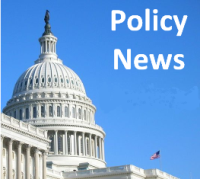ESA Policy News: Feb 12
Here are some highlights from the latest ESA Policy News by ESA’s Science Policy Analyst, Piper Corp. Read the full Policy News here.
WHITE HOUSE BUDGET REQUEST FOR 2011 SHOWS STRONG COMMITMENT TO SCIENCE–President Obama’s $3.834 trillion 2011 budget request shows continued support for science, in spite of the three-year freeze on nondefense discretionary spending that he has proposed. The budget is now headed to Congress where many of the cuts are likely to face opposition from both parties. Last year, the legislative branch supported roughly 60% of Obama’s proposed reductions, rejecting cuts to fossil fuel subsidies. This year, though, Obama promised to use his veto power if Congress fails to rein in spending.
Highlights from the request:
NSF: The National Science Foundation would receive $7.424 billion—8% above 2010 levels. All accounts would see at least modest increases; Major Research Equipment & Facilities Construction (MREFC) would receive a boost of more than 40%. Research and Related Activities would see an 8.2% increase; Education & Human Resources, 2.2%. The National Ecological Observatory Network (NEON) is slated to begin construction under the MREFC budget, with $20 million proposed for the first of a five-year project, which will build 62 sites across the country.
U.S. Global Change Research Program: USGCRP—a multi-agency program—would receive $369.9 million (a 16% increase) for basic research, comprehensive observations and integrative modeling related to temporal and spatial climate variability, terrestrial and marine ecosystems and human contributions and responses to climate change.
Forest Service: $5.38 billion (a $60 million increase). The budget request would refocus the agency’s resources on watershed and ecosystem improvement efforts and would launch a pilot program for long-term, landscape-scale restoration activities.
USGS: The US Geological Survey would receive $1.1 billion, an increase of $21.6 million. The agency would see some cuts, most notably to the National Maps Partnership, which would be suspended. Scientific efforts would remain well-funded.
NOAA: The National Oceanic and Atmospheric Administration would receive $5.5 billion—a 17% boost—with a strong emphasis on climate change and fisheries sustainability.
EPA: $10 billion (a proposed $300 million cut from 2010 levels). Observers were not surprised by this cut given that the Environmental Protection Agency received a considerable boost in 2010 compared to previous funding levels.
ENERGY DEPARTMENT (DOE): $28.4 billion (an almost 5% increase from 2010 levels), which includes significant boosts for nuclear power and energy research.
AGRICULTURE DEPARTMENT (USDA): $132 billion. Federal farm subsidies would see substantial cuts as would some farm bill conservation programs. The Department’s National Institute of Food and Agriculture competitive grants program would see a 63% increase, to $429 million, much of it focused on bioenergy research.
FUTURE OF SENATE CLIMATE BILL REMAINS UNCERTAIN–Although the focus in Washington is on jobs and the economy, the Senate climate debate continues to grow more complex. Majority Leader Harry Reid (D-NV) still plans to hold a floor debate this spring, but there is little consensus among senators as to when a climate and energy bill could win over the necessary 60 votes. This year’s midterm elections present a significant near-term obstacle–moderate lawmakers up for re-election will be less likely to risk a controversial vote–and could shift the political landscape considerably down the road, given the possibility of a Republican shakeup as voters respond to the ailing economy. And if the debate draws out too long, it may run into President Obama’s own re-election campaign, which could bump a climate bill to 2013, if not later.
EPA STRENGHTENS NO2 STANDARD FOR THE FIRST TIME–On January 25, the US Environmental Protection Agency (EPA) tightened the national public health standard on nitrogen dioxide (NO2) for the first time in almost 40 years. The changes focus on short-term exposure to the pollutant, which has been linked to a variety of human health problems. The final rule will institute a short-term limit on NO2 levels: no more than 100 parts per billion (ppb) in any given hour. EPA’s existing standard, which limits annual levels to 53 ppb, will remain in place. It will also require cities to install additional roadside monitors; since the majority of short-term NO2 exposure occurs near major roadways, the new rule calls for urban areas with more than 500,000 people to install at least one monitor near a major road–amounting to 126 new monitors in 102 urban areas. Cities of a million or more will continue their monitoring efforts, as stipulated in the original rule.
